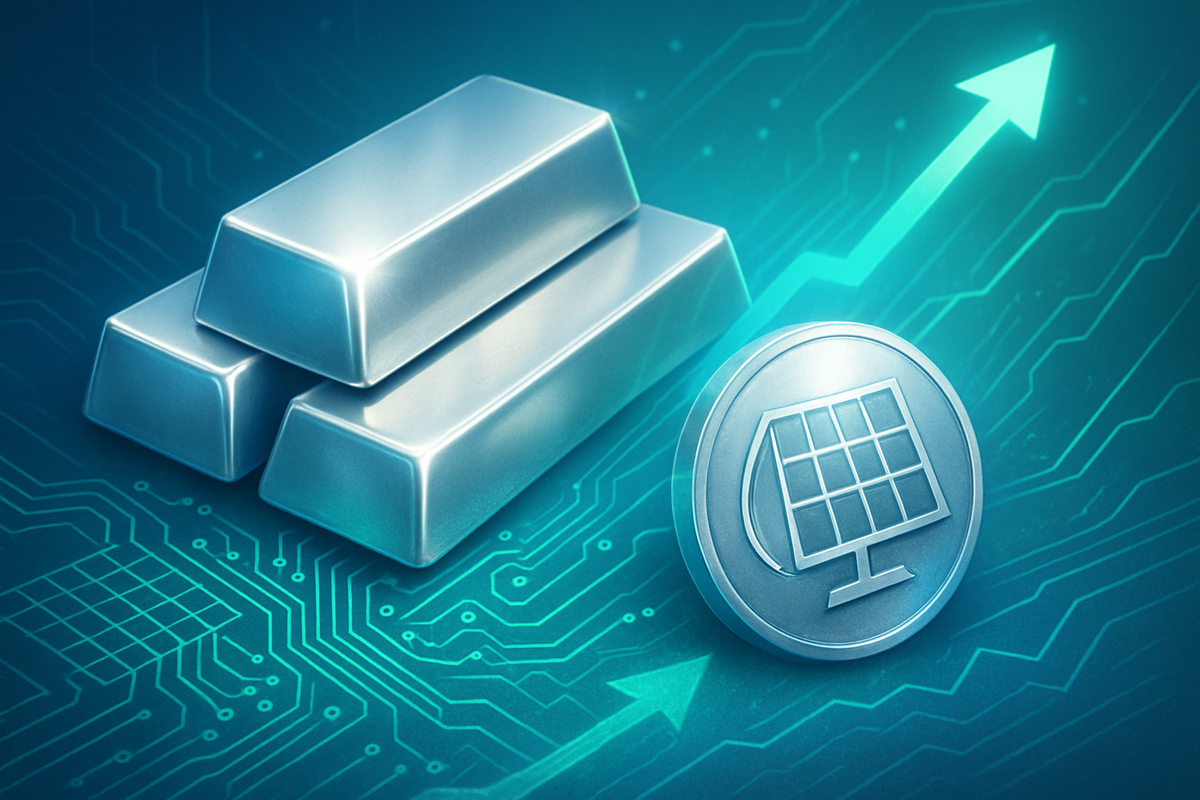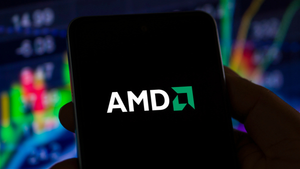
Silver has emerged as the standout performer in the precious metals market, experiencing a remarkable surge that has seen its price per ounce soar past $52.50 by October 20, 2025. This impressive rally, marking a 76% year-to-date gain, not only solidifies silver's position as a robust investment but also highlights its superior performance compared to gold, which, despite reaching unprecedented levels above $4,300 per ounce, has been outpaced in percentage terms. The white metal's ascent is fueled by a potent combination of persistent supply deficits, booming industrial demand from the rapidly expanding green economy, and a supportive macroeconomic environment, making it an increasingly attractive asset for investors seeking both safe-haven security and growth potential.
This unprecedented rally in silver reflects its dual identity as both a precious monetary metal and a critical industrial commodity. As global economies pivot towards sustainable technologies, silver's indispensable role in solar panels, electric vehicles, and advanced electronics has created a structural demand surge that extends beyond traditional investment drivers. Coupled with ongoing geopolitical uncertainties and inflationary pressures, silver is now glittering with an intensity that promises significant opportunities for those looking to diversify and capitalize on the current precious metals boom.
The Mechanics of a Meteoric Rise: Unpacking Silver's Historic Rally
The current silver surge is not merely a fleeting market anomaly but the culmination of several powerful, interconnected forces that have propelled the metal to its strongest performance in over a decade. By October 20, 2025, silver had touched an all-time high of $53.55 per ounce just days prior, on October 14, and an intraday high of $54.49 on October 17, demonstrating the fierce upward momentum it has built throughout the year. This dramatic appreciation, which has seen silver's value climb 76% year-to-date, has been punctuated by moments of volatility, such as a significant 6% single-session decline on October 17, largely attributed to profit-taking and an easing of immediate safe-haven concerns. However, these corrections have proven temporary, with prices quickly stabilizing around the $52 mark.
At the heart of silver's sustained rally is a critical structural supply deficit, now entering its fifth consecutive year. The market is projected to face a shortfall of approximately 118 million ounces in 2025, a deficit exacerbated by years of underinvestment in primary silver mining. Compounding this issue is the fact that nearly three-quarters of global silver production is a byproduct of mining other metals like lead, zinc, and copper, severely limiting its supply elasticity even in the face of soaring prices. This inherent supply constraint creates a fertile ground for price appreciation as demand continues to outstrip availability.
Adding significant fuel to the fire is the burgeoning industrial demand, which now accounts for a staggering 58-59% of total silver consumption and is projected to exceed 700 million ounces in 2025. The global push towards a "green economy" has positioned silver as an indispensable component in key sectors. Solar photovoltaics (PV) are a prime example, with PV applications consuming 185 million ounces in 2023 and global solar capacity additions expected to exceed 400 GW annually by 2025 – a sector where silver has no commercially viable substitutes. Beyond solar, the electrification of transportation, the proliferation of high-end electronics, and the rapid expansion of artificial intelligence (AI) chip manufacturing are all contributing to an insatiable appetite for silver. Notably, electric vehicles (EVs) require substantially more silver than traditional internal combustion engines, further cementing its critical role in the future of mobility.
The macroeconomic landscape has also played a pivotal role. Expectations of Federal Reserve interest rate cuts have made non-yielding assets like silver more appealing. A weakening US dollar, down 9.4% year-to-date by mid-October 2025, has further boosted demand by making dollar-denominated commodities cheaper for international buyers. Persistent inflation concerns have also driven investors to silver as a traditional hedge against the erosion of purchasing power. The tightening physical market, evidenced by soaring lease rates and significant outflows from COMEX warehouses, underscores the acute scarcity and strong physical demand, particularly from Asian trading centers like the Shanghai Gold Exchange, which have become key hubs for price discovery due to their massive electronics manufacturing and renewable energy sectors.
Winners and Losers: Corporate Fortunes Shift with Silver's Ascent
The unprecedented surge in silver prices throughout 2025 has created a distinct landscape of corporate winners and losers, profoundly impacting companies across various sectors. With silver surpassing $50 per ounce and hitting all-time highs above $54 in October 2025, the financial implications for businesses with direct or indirect exposure to the metal are substantial.
The most immediate beneficiaries are silver mining companies. These producers are experiencing a direct and significant boost to their revenues and profit margins. Their all-in sustaining costs of production are often well below current spot prices, leading to substantial "windfall profits" for every ounce extracted. This increased profitability allows them to invest in exploration, strengthen balance sheets, and potentially increase shareholder returns, enhancing their market position. Notable winners include First Majestic Silver Corp. (NYSE: AG), a pure-play silver miner deriving 57% of its revenue from silver, whose stock has jumped an astounding 179% year-to-date. Other major players like Wheaton Precious Metals Corp. (TSX: WPM) (NYSE: WPM), a streaming company with significant silver exposure, Pan American Silver Corp. (NASDAQ: PAAS), and Hecla Mining (NYSE: HL), which saw its stock rise 210% year-to-date, are also enjoying robust gains. Companies like MAG Silver (TSX: MAG) (NYSEAMERICAN: MAG), with its stake in the high-grade Juanicipio mine, are also directly benefiting from the metal's appreciating value.
Conversely, industries heavily reliant on silver as a raw material are facing significant headwinds due to escalating input costs. Solar panel manufacturers are particularly vulnerable, as silver paste is a critical component in photovoltaic (PV) cells. The cost of silver now accounts for a substantial portion of solar module production, rising from 5% in 2023 to an estimated 14% in 2025. This forces companies like JinkoSolar Holding Co., Ltd. (NYSE: JKS), Canadian Solar (NASDAQ: CSIQ), and Trina Solar to grapple with compressed margins or the difficult decision of passing on higher costs to consumers, potentially impacting their competitiveness and sales volumes. They are actively exploring "thrifting" strategies to reduce silver content or seeking alternative materials, often with performance trade-offs.
Similarly, Electric Vehicle (EV) manufacturers are feeling the pinch. An average EV contains significantly more silver (25-50g) than conventional vehicles, used in crucial components like battery management systems and electrical connections. This translates to increased production expenses per vehicle for industry giants such as Tesla (NASDAQ: TSLA), General Motors (NYSE: GM), and Ford Motor Company (NYSE: F), impacting their profitability in an already competitive market. The electronics industry, including companies like Apple Inc. (NASDAQ: AAPL), Samsung Electronics Co., Ltd. (KRX: 005930), and Intel Corporation (NASDAQ: INTC), also faces higher manufacturing costs for components where silver's superior conductivity is indispensable. Even the jewelry sector is experiencing challenges, with higher raw material costs squeezing margins for retailers. Financial institutions engaged in silver trading, such as JPMorgan Chase (NYSE: JPM) and Bank of Nova Scotia (TSX: BNS) (NYSE: BNS), face a mixed bag of opportunities from increased volatility but also risks from significant short positions or physical delivery obligations amidst acute market tightness.
A New Era for Silver: Critical Mineral at the Heart of the Green Revolution
Silver's dramatic price surge in 2025, pushing it above $50 an ounce and touching historical highs, signals a profound re-evaluation of its role in the global economy. This rally is not merely a reflection of typical precious metal dynamics but underscores silver's evolving status as a critical industrial commodity, indispensable to the burgeoning green economy and advanced technology sectors. This shift has far-reaching implications, creating ripple effects across industries, prompting potential regulatory changes, and setting a new precedent for precious metals rallies.
At the core of this transformation is silver's irreplaceable function in the green economy. Industrial demand for silver now accounts for roughly half of the total supply, a significant increase from historical patterns. The solar power (photovoltaics - PV) sector is a prime example; silver is a critical component in solar panels due to its unmatched electrical conductivity, essential for efficient electron capture. Despite ongoing efforts by manufacturers to reduce silver content per panel, the sheer scale of global solar expansion ensures that overall silver demand from this sector continues its upward trajectory, projected to consume over 200 million ounces in 2025. Similarly, the rapid growth of Electric Vehicles (EVs) further cements silver's industrial importance. Modern EVs require double the amount of silver found in gasoline-powered cars, utilizing it in high-voltage connectors, battery systems, and advanced safety features, with global EV sales projected to exceed 17 million in 2025. Beyond green energy, silver is vital for technology sectors like AI hardware, semiconductors, microchips, and 5G networks, where its superior thermal and electrical performance is crucial.
These dynamics create significant ripple effects across various industries. While silver mining companies and silver-backed ETFs are clear beneficiaries, manufacturers heavily reliant on silver as a raw material, such as producers of solar panels, electronic devices, and medical equipment, face significantly rising input costs. The metal's superior properties make substitution difficult without compromising product efficiency or reliability, potentially leading to higher consumer prices for finished goods. Furthermore, the market has witnessed a fundamental shift in price discovery, with Asian physical markets, particularly the Shanghai Gold Exchange, gaining prominence due to massive electronics manufacturing and aggressive renewable energy deployment in the Asia-Pacific region. This has contributed to a "silver squeeze," characterized by tight physical supply, low inventories, and soaring lease rates in major hubs, highlighting the acute scarcity.
A pivotal development underscoring silver's strategic importance is the US Geological Survey's 2025 draft proposal to classify silver as a critical mineral. This designation would mark a paradigm shift, reframing silver from primarily a precious monetary asset to a strategic industrial commodity essential for US economic and national security. Such a classification could unlock government support mechanisms, including enhanced permitting for domestic mining, subsidies, strategic stockpiling programs, and research funding for recycling technologies, aiming to secure domestic supply chains and reduce import dependence (the US currently imports over 70% of its silver). This move could also prompt similar classifications by other major economies, intensifying global competition for silver resources and potentially increasing geopolitical leverage for nations with significant production capacity.
Historically, the current silver rally is often compared to the surges in 1980 and 2011, but it exhibits distinct characteristics. The 1980 rally was largely driven by rampant inflation and speculative attempts to corner the market, leading to rapid, unsustainable increases. The 2011 rally, following the 2008 financial crisis, was fueled by quantitative easing and concerns about currency debasement. In contrast, the 2025 rally is fundamentally structural, driven by sustained industrial demand from the green energy transition and expanding technology sectors, coupled with persistent supply deficits. The market is in its fifth consecutive year of supply deficit, indicating that mining output cannot keep pace with demand. While macroeconomic factors like expectations of Federal Reserve rate cuts and a weaker US dollar also play a role, the underlying industrial foundation provides a more resilient and potentially sustained structural bull market for silver, pushing it to outperform gold in a way not seen in previous cycles.
The Road Ahead: Navigating Silver's Future Trajectory and Investment Avenues
Following its historic surge, silver's future trajectory appears firmly bullish, though not without its characteristic volatility. In the short term (next 6-12 months), analysts widely anticipate the bullish trend to persist, primarily fueled by the Federal Reserve's anticipated interest rate cuts and the conclusion of quantitative tightening by December 2025, which reduces the opportunity cost of holding non-yielding assets. While periodic profit-taking and shifting industrial demand signals will contribute to price swings, silver is expected to consolidate around the $50-$55 range. The market is currently experiencing "backwardation," where the spot price exceeds future delivery prices, a clear indicator of tight physical supply and heightened demand, particularly driven by Asian exchanges like the Shanghai Gold Exchange, which has seen unprecedented trading volumes.
Looking further ahead into the long term (2026 and beyond), silver's outlook remains robustly bullish, underpinned by persistent supply deficits and expanding industrial use. The market has been in a deficit for five to seven consecutive years, with mining output struggling to keep pace with demand. Forecasts for 2026 range from $44.50 to $65.00 per ounce, with some analysts predicting silver could reach $75 by 2026 or even surpass $200 per ounce by 2030, potentially establishing a new price floor around $50. This sustained growth is largely attributed to silver's critical role in the "green economy" – particularly in solar panels and electric vehicles – and its indispensable use in advanced electronics, 5G infrastructure, and AI hardware. The automotive sector alone is projected to absorb 90 million ounces of silver annually by 2025.
These dynamics necessitate strategic pivots across industries. The mining sector must accelerate exploration and development of new high-grade projects, leveraging AI, machine learning, and robotics to enhance efficiency and sustainability. Increased investment in recycling technologies is also crucial to bridge the supply-demand gap. Manufacturers heavily reliant on silver must prioritize securing long-term supply contracts and exploring immediate hedging solutions to mitigate cost shocks. While difficult, research into reducing silver loadings and exploring alternative materials will continue. For investors, the path forward presents compelling opportunities and inherent challenges. A continued bull market for silver is highly probable, offering significant appreciation potential. However, investors must be prepared for increased volatility, as silver is inherently more prone to price swings than gold. These pullbacks could present strategic buying opportunities for long-term holders. Silver's role as an inflation hedge and portfolio diversifier is also expected to strengthen amidst anticipated monetary easing and currency debasement concerns.
For those looking to ride this precious metals surge, Exchange Traded Funds (ETFs) offer accessible avenues. Physically-backed silver ETFs provide direct exposure to the metal's price, with each share representing fractional ownership of physical silver held in secure vaults. Top choices include iShares Silver Trust (NYSE Arca: SLV), the largest and most liquid, and abrdn Physical Silver Shares ETF (NYSE Arca: SIVR), known for its low expense ratio. For investors prioritizing physical redemption options, Sprott Physical Silver Trust (NYSE Arca: PSLV) is a closed-end trust alternative. Additionally, silver miner ETFs offer equity exposure to companies engaged in silver mining, providing leveraged upside to rising silver prices, albeit with operational risks. Examples include Global X Silver Miners ETF (NYSE Arca: SIL) for diversified exposure to established miners, and Amplify Junior Silver Miners ETF (NYSE Arca: SILJ) for higher growth potential from smaller, junior miners. Investors should carefully consider their risk tolerance and investment horizon when selecting an appropriate silver ETF.
The Enduring Allure: Silver's Lasting Impact and Investor Vigilance
Silver's extraordinary performance leading up to October 20, 2025, marks a pivotal moment for the white metal, firmly establishing its dual identity as both a prized monetary asset and an indispensable industrial commodity. The key takeaway from this surge is the structural nature of its demand, driven primarily by the global transition to a green economy and advancements in technology, compounded by persistent supply deficits. This is not merely a speculative bubble but a re-rating based on fundamental shifts in global manufacturing and energy infrastructure. With prices soaring past $50 an ounce and outperforming gold, silver has demonstrated its capacity for significant capital appreciation, offering investors a unique blend of safe-haven appeal and growth potential.
Moving forward, the silver market is poised for continued strength, albeit with its characteristic volatility. The ongoing supply squeeze, fueled by underinvestment in mining and the byproduct nature of much of its production, coupled with insatiable demand from solar, EVs, and electronics, suggests that silver's elevated price levels may represent a new normal. The potential classification of silver as a critical mineral by the US Geological Survey further underscores its strategic importance, signaling future policy support and increased focus on supply chain security. This will likely intensify global competition for resources and drive innovation in mining and recycling.
For investors, vigilance and a long-term perspective will be paramount. While the allure of substantial gains is strong, episodic corrections are to be expected. These periods of volatility should be viewed as potential buying opportunities for those with a conviction in silver's long-term fundamentals. Key indicators to watch include global renewable energy deployment rates, EV sales figures, and advancements in semiconductor technology, all of which directly correlate with industrial silver demand. Additionally, macroeconomic factors such as central bank monetary policies, inflation trends, and the strength of the US dollar will continue to influence silver's investment appeal. The increasing prominence of Asian trading centers in price discovery also warrants close attention.
In conclusion, silver's glittering ascent is more than a fleeting market event; it represents a fundamental recalibration of its value in a world increasingly reliant on sustainable technologies and advanced electronics. Its lasting impact will be felt across industries, shaping supply chains, driving innovation, and solidifying its position as a truly strategic metal. Investors who understand these underlying drivers and navigate the market with a well-informed strategy are best positioned to capitalize on silver's enduring allure in the months and years to come.
This content is intended for informational purposes only and is not financial advice







